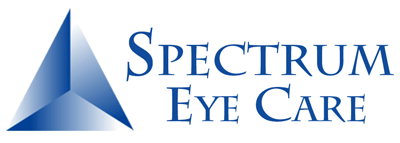You may have heard the term “20/20 vision” during one of your eye exams. It is something your eye doctor may congratulate you for if you are found to have it. But what does it actually mean? Spectrum Eye Care takes a closer look.

The Snellen Chart
To better understand 20/20 vision, you need to understand how the Snellen chart works. One of the most recognizable vision-related medical tools, the Snellen chart has a big letter E at the top and is found in most eye care clinics. It was developed by Dr. Herman Snellen, a Dutch eye specialist, in 1862. Before this, corrective lenses were prescribed for most, if not all, vision problems.
The Snellen chart has multiple rows of letters below the giant E, with each succeeding row being 25% smaller than the one above it. Each line also has a corresponding number that represents what a person with normal visual acuity should be able to see from a certain distance.
Your eye doctor will tell you that you have 20/20 vision if you can read the bottom line on the chart clearly from a distance of 20 feet. If you have 20/100 vision, it means that a person with normal visual acuity could read that particular line from 100 feet away, but you need to be much closer–20 feet away–to read it.
Is 20/20 Vision Considered Perfect Vision?
Having 20/20 vision does not necessarily mean your vision is perfect. The term only pertains to the sharpness or clarity of vision at a given distance. Your overall visual ability includes other factors like peripheral awareness, focusing ability, color vision, depth perception and eye coordination.
Visual acuity problems are corrected using eyeglasses or contact lenses prescribed by your eye doctor. These devices help manage refractive errors such as myopia (nearsightedness) and hyperopia (farsightedness).
To find out if you have 20/20 vision, get your eyes examined by our eye care specialists. Call (704) 543-9000 (South Charlotte), (704) 334-4444 (Uptown) or (704) 817-4600 Charlotte. You may also fill out our contact form to schedule an appointment.

